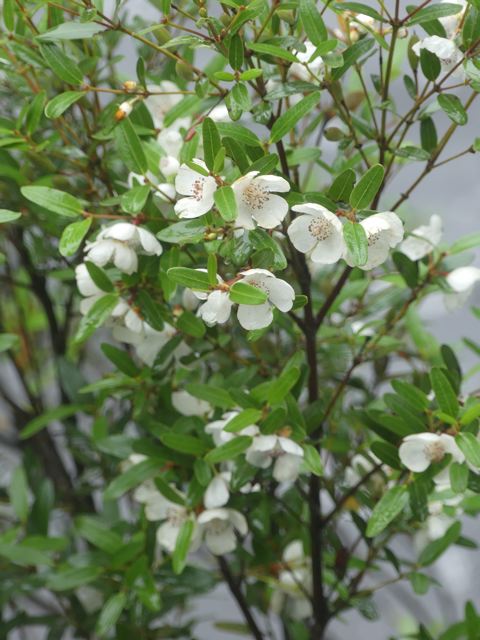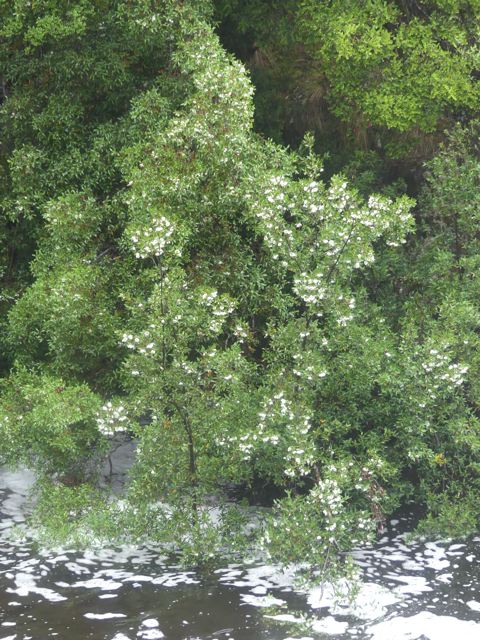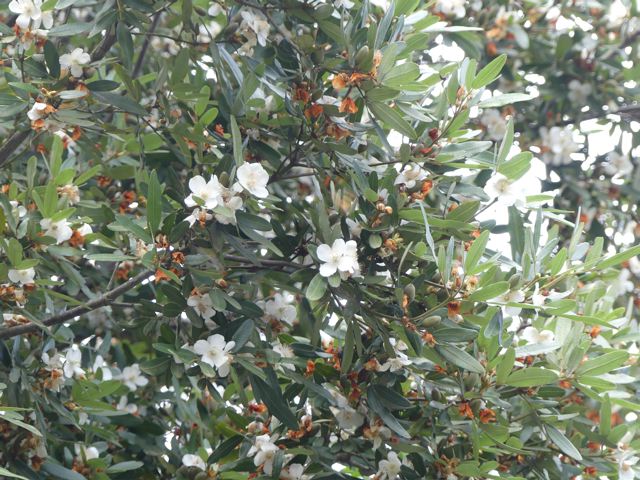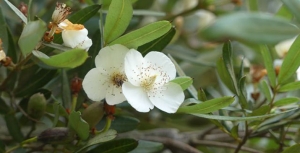Displaying items by tag: Tasmanian Leatherwood
The Future of Tasmanian Leatherwood
Visiting Tasmania at leatherwood flowering time in February was a nice experience apart from the weather. It has a perfumed flower likened to a four-petalled version of the five-petalled English wild dogrose. Tasmanian Leatherwood Eucryphia lucida, of honey fame, is a high rainfall, temperate rainforest species often found close to rivers (see the two pictures below taken at Pencil Pine Creek, Cradle Mountain). Driving along the Lyell Highway from Queenstown to Derwent Bridge we saw several beehive ‘mini cities’ in valleys, clearly exploiting the setting of the plant.


Australia has five species of Eucryphia, one of the commoner ones, E. moorei (see the picture at the top of the page and below) liking wet highland environments from the Illawarra to north-east Victoria.
The easiest place to see it locally in late summer is across the road from the Robertson Pie Shop where a windbreak hedge of small trees to 5 metres follows a fence line. We also saw it in flower at Fitzroy Falls, several specimens being scattered through the rainforest apron of the valley, though you wouldn't spot them without their flowers.
 The latter setting is more typical for the tree and it seems to also like rocky sites – we located another tiny colony in Hawkesbury Sandstone on rocky Bundanoon Creek in Meryla State Forest south of Moss Vale.
The latter setting is more typical for the tree and it seems to also like rocky sites – we located another tiny colony in Hawkesbury Sandstone on rocky Bundanoon Creek in Meryla State Forest south of Moss Vale.
All Australian species grow in high rainfall, cool to warm temperate settings ranging from E. moorei of the Illawarra to E. wilkiei of the mountain cloud forests of North Queensland. But globally the picture of Eucryphia is bigger.
There are a further two species, E. cordifolia and E. glutinosa, from cool temperate rainforests of South America. And it turns out that there are striking similarities in the flavour of honeys from the Chilean E. glutinosa, known there as Ulmo, and that of Tasmanian Leatherwood. This is particularly extraordinary since the two continents severed their link via Antarctica more than 60 million years ago.
Eucryphia species have been cultivated in Australia, Europe and elsewhere, and include pink-flowered forms and hybrids. While the variety of rugged and inaccessible settings of common species like E. moorei may mean they are fairly safe, the northern species, E. jinksii and E. wilkiei are both local and endemic to their settings and are listed as threatened. E. wilkiei of Mt Bartle Frere cloud forests is especially vulnerable to climate change – horrendous heat records were set there this summer.
Of further concern, Tasmania was beset by wildfires this summer, particularly in the Huon Valley region south-west of Hobart. This, and the drought that amplified it, had a variety of negative effects on Leatherwood. There were multiple tree losses and flowering was weak: trees that did flower produced very little nectar. The suspected link to climate change is a cause for concern and Leatherwood may yet be another canary in the coal mine. Anyway, if you're looking to buy Leatherwood honey this year it won't easy or cheap.
References
Wikipedia
Blog: The Nature of Robertson
By John Martyn












